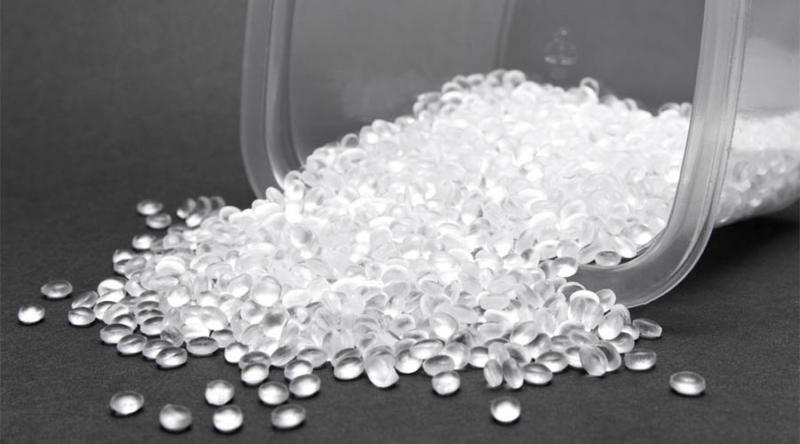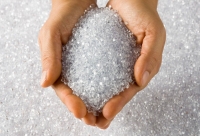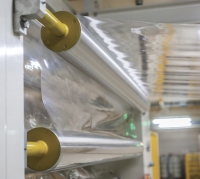HDPE, or High-Density Polyethylene, is a type of thermoplastic polymer made from the monomer ethylene. It is known for its high strength-to-density ratio, making it a popular material in a variety of applications. Here are some key characteristics and uses of HDPE:
Characteristics of HDPE:
High Strength-to-Density Ratio:High Density Polyethylene is both strong and lightweight.
Durability: It has excellent impact resistance and can withstand heavy loads.
Chemical Resistance: HDPE is resistant to many solvents, acids, and bases, making it ideal for containers and pipes that carry chemicals.
Low Moisture Absorption: It does not absorb water, which adds to its durability and reliability in various environments.
Flexibility: It can be easily molded into various shapes.
UV Resistance: Some grades of High-Density Polyethylene are UV-resistant, extending their usability outdoors.
Common Uses of HDPE:
Packaging: Bottles, milk jugs, and plastic bags.
Piping Systems: Used in both potable water and wastewater systems due to its corrosion resistance.
Containers: Food storage containers and industrial chemical containers.
Geomembranes: Used in landfills, mining, and other containment applications.
Construction: Plastic lumber, flooring, and furniture.
Toys: Many children’s toys are made from High-Density Polyethylene due to its safety and durability.
Advantages of HDPE:
Recyclability:High Density Polyethylene is highly recyclable, often turned into products like piping, plastic lumber, and new bottles.
Economic Efficiency: Its durability and recyclability make it a cost-effective material over its lifecycle.
Versatility: Can be used in a wide range of applications due to its physical and chemical properties.
Disadvantages of HDPE:
Environmental Impact: While recyclable, improper disposal can lead to pollution.
Processing Limitations: Requires specific conditions and technologies for recycling and manufacturing.
HDPE Production Process:
Here’s a detailed overview of the HDPE production process:
1. Raw Material Preparation
The primary raw material for HDPE production is ethylene, a gaseous hydrocarbon obtained from petroleum or natural gas through processes such as steam cracking.
2. Polymerization
The polymerization of ethylene into HDPE can be done through various methods, primarily using different types of reactors and catalysts. The main polymerization methods are:
a. Slurry Process
Catalyst: Ziegler-Natta or Chromium-based catalysts.
Reactor: Loop reactor or stirred-tank reactor.
Process: Ethylene is polymerized in a hydrocarbon solvent (like hexane or isobutane). The catalyst is introduced, and the ethylene gas is bubbled through the solvent. The polymer forms as a slurry, which is then separated from the solvent.
b. Gas-Phase Process
Catalyst: Ziegler-Natta, Chromium-based, or Metallocene catalysts.
Reactor: Fluidized bed reactor or gas-phase reactor.
Process: Ethylene gas is polymerized in a reactor without any solvent. The gas-phase reactor maintains the ethylene and catalyst in a fluidized state. This method is highly efficient and allows for continuous production.
c. Solution Process
Catalyst: Ziegler-Natta or Metallocene catalysts.
Reactor: Stirred-tank reactor.
Process: Ethylene is polymerized in a solvent at high temperatures and pressures. The polymer solution is then cooled, and the polymer is precipitated out.
3. Purification
After polymerization, the HDPE product needs to be purified to remove any unreacted monomers, catalysts, and solvents. This typically involves:
Removal of Solvents: Solvents are separated from the polymer by evaporation or distillation.
Catalyst Removal: Catalysts are deactivated and removed through chemical treatments or filtration.
4. Pelletization
The purified HDPE is then processed into a form suitable for transportation and further manufacturing:
Extrusion: The HDPE is melted and extruded through a die to form long strands.
Cooling: The strands are cooled in water baths to solidify.
Pelletizing: The solidified strands are chopped into small, uniform pellets. These pellets are the final product used by manufacturers to create various HDPE products.
5. Quality Control
Throughout the production process, various quality control measures are employed to ensure the HDPE meets the required specifications. These include:
Molecular Weight Distribution: Ensuring consistency in polymer chain lengths.
Density and Melt Flow Index: Checking the material’s density and flow characteristics.
Mechanical Properties: Testing for tensile strength, impact resistance, and other physical properties.
Applications of HDPE
HDPE is used in a wide range of applications due to its versatility and robustness. Common applications include:
Packaging: Bottles, caps, and containers.
Pipes and Fittings: For water supply, sewage, and gas distribution.
Consumer Goods: Toys, household items, and sporting goods.
Construction Materials: Geomembranes, plastic lumber, and roofing materials.
Environmental and Safety Considerations
Sustainability: HDPE is recyclable, and efforts are being made to increase recycling rates.
Safety: The production process involves handling flammable gases and chemicals, requiring stringent safety protocols to prevent accidents and ensure worker safety.
In summary, the production of HDPE involves the polymerization of ethylene using various catalytic processes, followed by purification and pelletization. The choice of polymerization method affects the properties and applications of the resulting HDPE. This versatile material is essential in many industries, and ongoing advancements aim to improve its production efficiency and environmental impact.







Leave A Comment